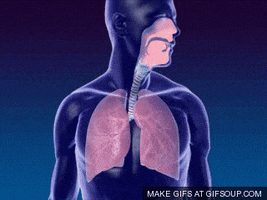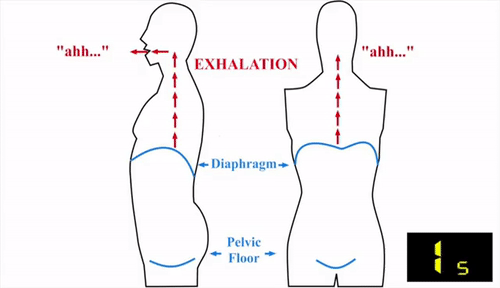Not often do we think about the vital role our lungs play in our health. It is not until we have breathing problems that we notice how vital these organs are. But the fact is, like other parts of the body, our lungs need care and attention every day to perform at optimal level.

Proper breathing feeds critical oxygen to every cell in our bodies. Without adequate oxygen, we are more prone to serious health problems, including chronic obstructive pulmonary disease (COPD), heart disease, and various respiratory diseases.
But breathing normally every day is not enough to keep oxygen flowing through to our cells at top levels. When our lungs are at rest and during most regular activities, we only use them at 50% capacity. Like the rest of the body, lungs stay healthy from exercise and movement.
To develop and strengthen your lungs, it is important to challenge them regularly with intense activities.
Want to tune up your lungs? Try these nine tips and keep your lungs going strong for decades to come.
Diaphragmatic Breathing

One of the simple things you can do to keep your lungs operating at peak efficiency is a simple breathing technique that stresses the diaphragm muscle’s use, according to Keith Roberts, director of respiratory care at Rush University. Respiratory therapists specialize in the lungs’ health and proper function and learn the latest techniques and technologies for lung health by taking CEU classes annually.
Roberts says that by focusing on dropping the diaphragm as you breathe in, your inhale is much deeper. This is a technique that professionals singers utilize to boost their lung capacity, and they say it is beneficial.
Simple Deep Breathing
Deep breathing also can help you to develop the full capacity of your lungs. As you inhale slowly, expand your belly while being aware of dropping the diaphragm. Next, expand the ribs, and allow your floating ribs to expand like they are wings. Now, let the upper chest expand and rise.
After this, exhale as much as you can by allowing the chest to fall. Then, contract the ribs and bring your stomach muscles in and up to life your diaphragm. Expel the last amount of air. If you perform this exercise regularly, you should experience increased lung capacity.
Counting Breaths
You can boost your lung capacity by extending the length of the inhale and exhale. Begin by counting how long your natural breath takes. If it takes until the count of five to inhale, it should take until you count to five on the exhale. They must be of equal length.
After you learn how long your average breath takes, add a count to each of your inhales and exhales until you can easily extend how long it takes to inhale and exhale fully.
Be sure you avoid straining yourself or making yourself uncomfortable. This process should be comfortable, gradual, and cause no pain.
Pursed Lip Breathing
People who have bronchitis or asthma may have inflamed air passages that prevent air from moving correctly through the lungs. When this occurs, old air is stuck inside the lungs. This makes it hard for the lungs to absorb new air and oxygen. These conditions can make you feel like you are short of breath all the time.
Pursed Lip breathing forces the air passages to stay open for a long time while you exhale. Stale air is expelled, and fresh air is absorbed.
Pursed-lip breathing is simple to do and can be performed anywhere at any time. The exercise has you inhale, slowly, via the nose and exhale through your pursed lips. The idea is to take twice as long to breathe out as breathe in. If you breathe in for five seconds, you should exhale for 10 seconds.
Pay Attention to Your Posture
Your lungs are soft, and they only take the room that you allow for them. It is a good idea to sit tall and reach over your head from time to time. This makes more room for the lungs to expand.
A simple way to give the lungs even more space is to lean back a bit in a chair, lift your chest, and open the body’s front as you take a deep breath.
Drink Water
Drinking enough water is vital for the lungs, just like for the rest of your body. Staying hydrated by drinking water during the day helps keep the lung lining thin, allowing your lungs to work better.
Laugh
Many do not realize it, but laughing is a useful exercise to work your abdominal muscles and boost lung capacity. It also allows the lungs to clear out by forcing stale air out and letting fresh air into the lungs.
Keep Active
Moderately intense exercise is excellent for lung health. When you raise your daily activity level, you get healthier lungs, a stronger heart, and an elevated mood. Experts recommend at least 20 minutes of moderately intense exercise per day, such as a fast walk or a bicycle ride.
Try a Breathing Club
If you are unable to be active because of health issues, you can try a breathing club. These are support organizations for people with lung and breathing issues. You can focus on breathing techniques and get information and encouragement from others to help you stay healthy and raise your life quality.
You can find Better Breathers Clubs by visiting the American Lung Association website.
Things to Remember
Lung exercises help to boost your lung health and capacity. However, if you have a lung disease, it is always smart to talk to your healthcare provider before changing anything regarding your activity level.
Also, no exercise will produce results overnight. Expect to see positive results gradually. And listen to your body: If any of these exercises or activities cause discomfort, talk to your doctor right away.
Interesting related article: “What is Health?”

